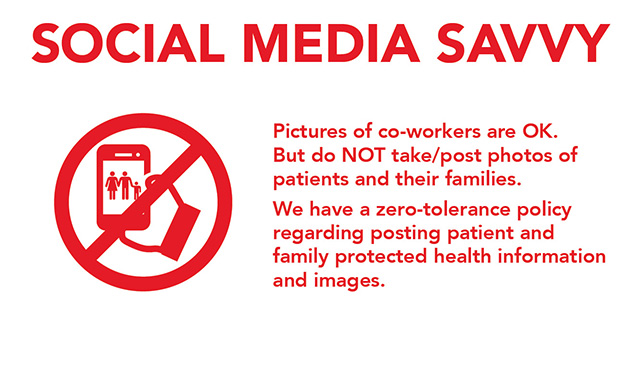
As a Texas Children’s employee, it is important to make informed, thoughtful decisions about what you choose to post online. Read more

As a Texas Children’s employee, it is important to make informed, thoughtful decisions about what you choose to post online. Read more
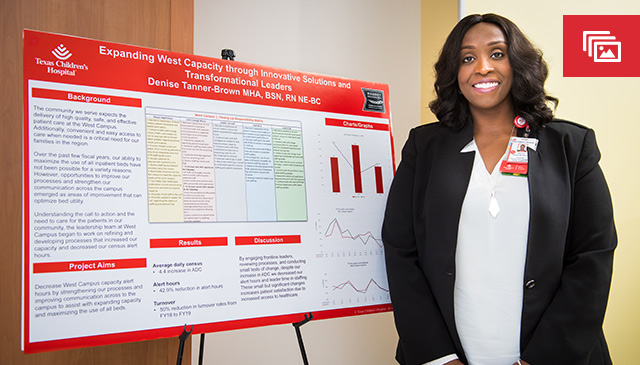
This fiscal year The West Campus Quality, Innovation, and Research Strategic Imperative team implemented two unique and informative events to engage and educate staff and providers on the importance of quality improvement work and its impact on improving patient care and outcomes.
“It stemmed from the four strategic imperatives for the organization, one of them being research quality and innovation,” Texas Children’s Hospital West Campus Assistant Vice-President Matt Timmons said. “It’s really about awareness, and a celebration of the improvements that were made over the last year.”
On August 29, dozens of employees from all disciplines attended West Campus’ Quality Boot camp which was geared toward enhancing their Quality Improvement (QI) knowledge and skills through an interactive education session applying the Institute of Healthcare Improvement’s quality tools listed below:
“I appreciate going through the steps as a group and then getting to apply the knowledge for our own project,” a participant commented in a follow up survey.
In addition to the boot camp, on October 10, West Campus hosted a Quality Showcase. This event gathered West Campus staff and providers to listen and discuss visual presentations that highlighted innovative solutions through quality projects that have had a positive impact on patient care, outcomes, and access
In alignment with the organization’s strategic requirements, the West Campus leadership developed these efforts to inform, motivate, and execute quality effectively.
“You have to practice quality,” Texas Children’s West Campus Assistant Director of Respiratory Care Clinic, Gboly Harris said. “With this initiative we want to ensure that everyone is aware of quality practices to ultimately improve outcomes for patients.”
Upon providing background information each presenter was asked to set sustainable goals in their areas, document the outcomes and preventative steps, and effectively expound on their model of care. Below are the 10 quality project focuses presented at the showcase:
“This showcase was encouraging to see people in their element, creating projects that they feel would be beneficial to other departments to have better quality of care for our patients,” Clinical Lead in Pediatric Surgical Services Caitlin Justus said. “Being able to have the opportunity to collaborate with others to gain tips on how we can succeed in our respective areas was very helpful.”
Following the showcase, Chief Quality Officer Dr. Eric Williams provided a few words to recap the information that was presented along with motivating employees to continue overcoming risk, meeting national guidelines and adopt other strategies they may have learned during those two hours.
“Patient safety is a large part of patient experience,” Williams said. “You cannot manage quality from one central space. It starts with your areas successfully providing tools to the rest of the campus that can ultimately enhance quality throughout the organization.”
Click here to learn more about each quality project.
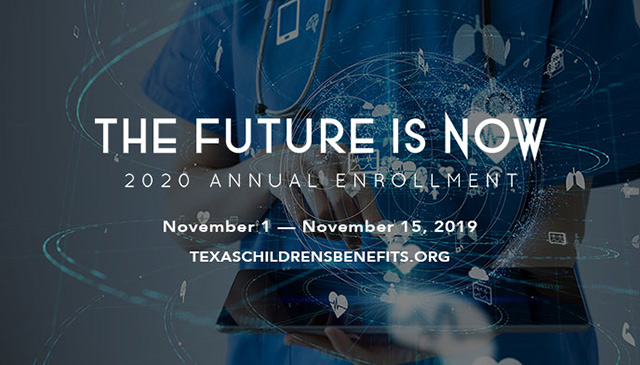
Are you ready to Explore and Enroll? Texas Children’s 2020 Annual Enrollment blasts off Friday, November 1, and lasts until 11:59 p.m. on Friday, November 15. Find out what has changed so that you can chart the course that’s right for you. Read more
The West Campus Security Department has recently added an autonomous employee to their team. Texas Children’s is always looking for new and innovative ways to improve patient experience, and with the advancement of technology, the possibilities are endless. The new security robot has officially been deployed, and can be seen roaming the West Campus parking lots.
“I am extremely excited. This has been a team effort from the very first day,” West Campus Security Manager Rick Robertson said. “West campus leadership has been supportive of our efforts from the beginning to help this happen. I’m very grateful for everyone’s efforts in this regard. I think it’s another example of how Texas Children’s Hospital is willing to go the extra mile and do the things that we need to do to provide for everyone’s safety and security.”
The robot is not a replacement for security officers, but a tool they can use to help strengthen security tactics. Houston Police Department says that they are going to continue to work closely with the hospital and provide any additional support needed.
“Texas Children goes above and beyond to make its patients and employees feel safe,” Houston Police Department Northwest Patrol Division Commander Frank Fernandez said. “This is just another example of that. It frees up officers and security officers from doing some of the more regular routine tasks to be able to respond to something if an emergency happens.”
The security robot is over five feet tall, weighs 400 pounds, and is equipped with lights, sound, and a patient friendly design that can be seen anywhere in the parking lot. In addition, the robot has 360-degree cameras, an intercom, heat detection, license plate recognition, a siren, and a strobe light.
View a gallery of photos below.
The robot was provided by Knightscope, a security technology company that was founded in 2013 and is headquartered in Mountain View, California. The goal of Knightscope is to reduce crime and improve public safety by designing, building and deploying Autonomous Data Machines, which are used to monitor malls, parking lots, and neighborhoods, and in our case, children’s hospitals.
“Hospitals are one of our fastest-growing segments and Children’s is one of the leading innovators in Texas,” Executive Vice President and Chief Client Officer Stacy Stephens said. “When we started Knightscope in 2013, we dreamed of reducing crime by up to 50 percent anywhere we deployed a robot in five to ten years. Never in our wildest dreams did we imagine that within a couple of years, we would have clients reporting back to us a 100 percent reduction in crime.”
Prior to the official deployment, there was a two-week installation process. This also included setting up charging stations, and giving the robot the freedom to roam the outpatient parking lot and become more familiar with its future work environment when it’s time to patrol alone.
“It’s all very intuitive,” Knightscope Robot Deployment Lead Daniel Coleman said. “Security Officers receive information through the robot’s included browser-based user interface and they’re able to determine everything about the robot – where it’s going, what patrol zone it’s currently patrolling, the battery life percentage – all of these and more are all viewable on a computer, laptop or mobile device.”
This robot is brand new to the Texas Children’s system and is a pilot program for the organization. If the program is successful we may see more Texas Children’s Hospital deployments to not only protect and serve, but also bring joy to patients and their families.
“We’ve already seen that our children are very excited about it and want to come up and say hello to the robot,” Robertson said. “I think that’s something that your typical security devices don’t bring to the table, an effective security tool that’s child friendly and fun! We’ve already had a naming contest that involved our patients, families and staff. ROSIE was chosen as our new team members name in a very close vote. We look forward to working with her.”
Texas Children’s Lester and Sue Smith Legacy Tower recently won the Intensive Care Unit (ICU) Design Award sponsored by the American Association of Critical Care Nurses, the Society of Critical Care Medicine and the American Institute of Architects Academy on Architecture for Health.
Each year, a panel of judges including physicians, nurses and architects from the sponsoring organizations evaluate adult, pediatric and neonatal ICUs around the world. The award is based on several criteria including functional design, integration of technology, and use of innovative, aesthetic and creative design elements that promote an efficient, safe and healing environment for the delivery of critical care.
“We are grateful to receive the ICU Design award,” said Dr. Lara Shekerdemian, Chief of Critical Care at Texas Children’s. “This award is a culmination of four years of hard work, collaboration, creative thinking and meticulous attention to detail that went into the design of our ICU spaces. The award is for everyone at Texas Children’s who, together with our partners at FKP Cannon Design, Bellows, and our amazing family advisory committee, helped us plan, design and seamlessly transition to our wonderful new home – Legacy Tower.”
To create a safe, efficient, and family-centered environment, Texas Children’s involved patients, families and all disciplines of the health care team from day one of the project through its completion in September 2018. From reviewing workflows to participating in patient care simulations before, during and after construction, design requirements were continuously refined to ensure the final layout would meet patient and staff needs.
As part of the ICU Design Award application process, Texas Children’s created a video highlighting our award-winning Pediatric Intensive Care Unit (PICU) and the distinct features that help distinguish our hospital from other pediatric institutions.
The Lester and Sue Smith Legacy Tower has 138 ICU rooms, all with dedicated family space, over seven floors. The new ICU floors include a dedicated subspecialty neuro-ICU, surgical ICU, heart failure ICU and a neonatal cardiac ICU.
Since opening the Legacy Tower PICU in May 2018 and the Legacy Tower Cardiovascular Intensive Care Unit (CICU) in September 2018, patients, families, and our critical care team have benefited from the design features that helped the organization achieve this award.
“Our patients and their families are very happy with their new spaces, and we are very excited to be in our new home for critical care in Legacy Tower,” said Gail Parazynski, Vice President of Nursing. “It took several years of planning to get to where we are today. It was a team effort on many different levels to ensure a safe environment of care was cultivated for our critical care staff, patients and their families.”
Texas Children’s will formally receive the ICU Design Award when the Society of Critical Care Medicine convenes for their annual meeting in February 2020.
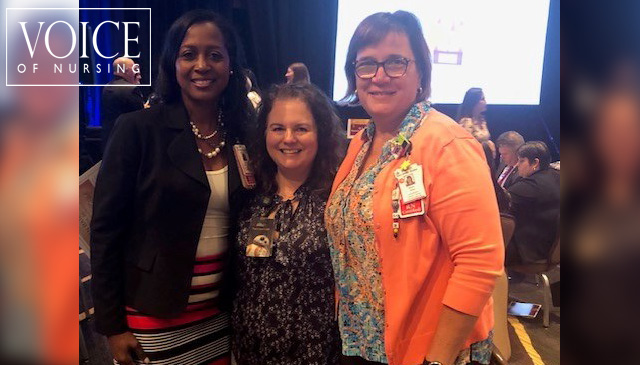
Robin Haidacher, one of 42 Texas Children’s nurses who received the 2019 Excellence in Nursing Award from the Good Samaritan Foundation, shares what this award means to her and how her colleagues inspire her every day. Read more
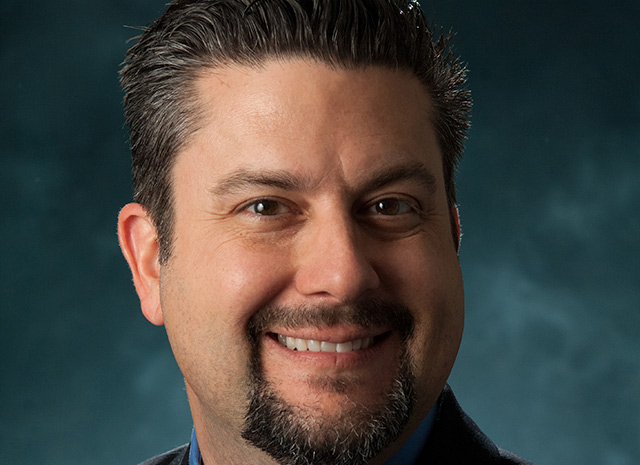
Your name, title and department. How long have you worked here?
My name is Mark Mazziotti and I’m an Associate Professor of Surgery and Pediatrics, and I work in the Division of Pediatric Surgery. I’ve been on staff at Texas Children’s since 2001 and joined the Baylor Faculty in 2006.
Tell us how you found out you won a super star award.
I was finishing clinic and the clinic staff told me that Jag Grooms, our office administrator, wanted to talk to me about a new hire in the conference room at the end of the hall. I thought that was strange but didn’t think twice and walked into a surprise. The staff, Jag, and my administrative assistant Vanessa Mose, presented me with the award.
What does it mean to be recognized for the hard work you do? How has the organization helped you achieve your personal and professional goals?
It is a great honor to even be considered for an award that is based on the core values of Texas Children’s Hospital. I’ve been fortunate to work at one of the best children’s hospitals in the world over the past 18 years. The amazing clinical volume and the ability to attract patients from all over the United States has helped me fulfill my career goals. Although I perform the full complement of procedures of a pediatric surgeon, I focus on correcting chest wall deformities. I’ve had the privilege of treating patients from 4 different countries and ten different states. I also have the opportunity to teach medical students, residents, and fellows and this is incredibly rewarding.
What do you think makes someone at Texas Children’s a super star?
To me, a Super Star always goes the extra mile and makes sure that they excel at their craft. For me, I want to make the patient experience special. I gladly add patients to my clinical schedule so they don’t have to make a second trip to the hospital. Patients and their families are anxious and need their health care problems addressed and resolved. As a surgeon, I deal with very anxious patients and parents and it’s my job to inform them, care for them, and do my best to get them back to their usual activities.
What is your motivation for going above and beyond every day at work?
I have always had a motivation to excel at everything I do. It is an inherent motivation, but also one instilled by my parents to be the best that I can be, as well as to seek to help others. I think what helps me the most is to put myself in the shoes of those I care for – when that occurs, you almost don’t require motivation.
What is the best thing about working at Texas Children’s?
Without a doubt, I would have to say the people. No matter what their level of experience or their role, it’s clear that we all pull together and have common goals. It’s no wonder that Texas Children’s Hospital is always among the best places to work.
What does it mean to you that everyone at Texas Children’s is considered a leader? What is your leadership definition?
In my opinion, it means that everyone at Texas Children’s should strive to lead by example. The definition of a leader is someone that motivates and inspires others around them. I believe the best leaders influence the actions of others by demonstrating qualities such as compassion, patience, honesty, integrity, decision-making capabilities, good communication skills and accountability.
Anything else you want to share?
I love art and art history. I have over one hundred published medical illustrations and I enjoy oil painting. I have historically painted a canvas for our graduating fellow, although for the past two years I have created movies.